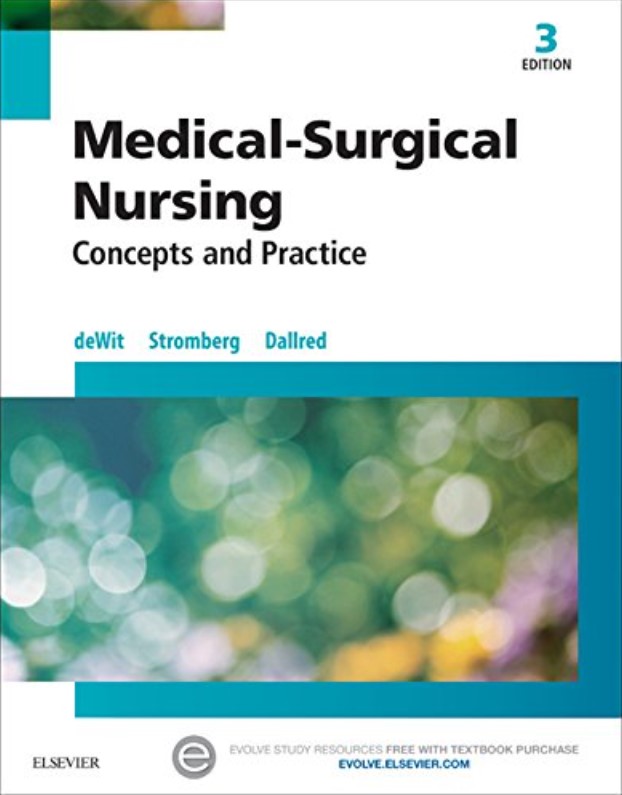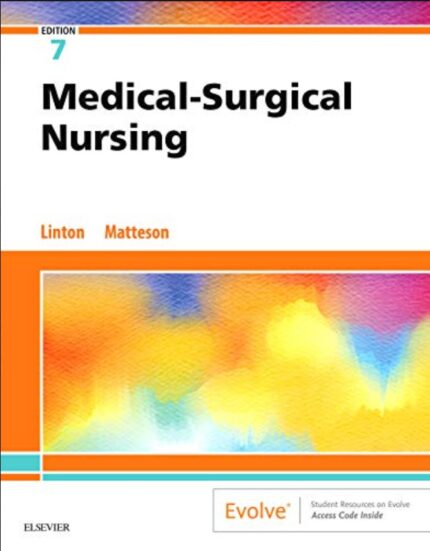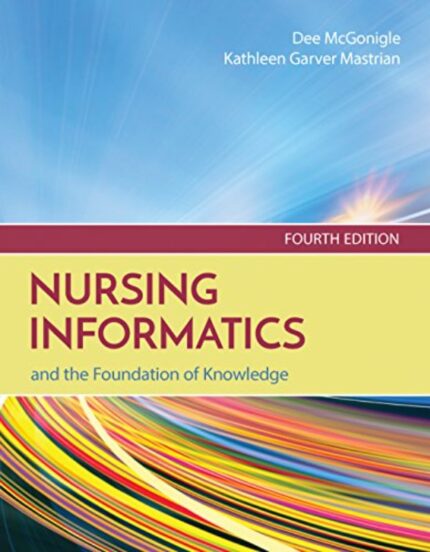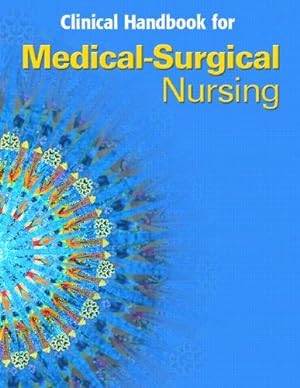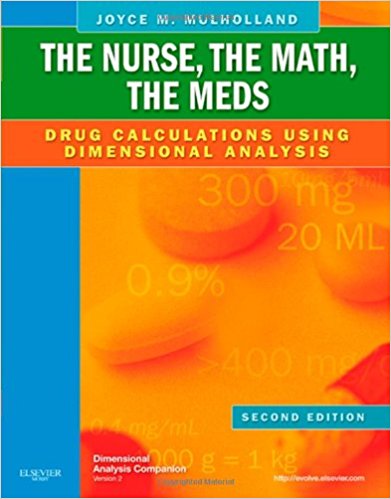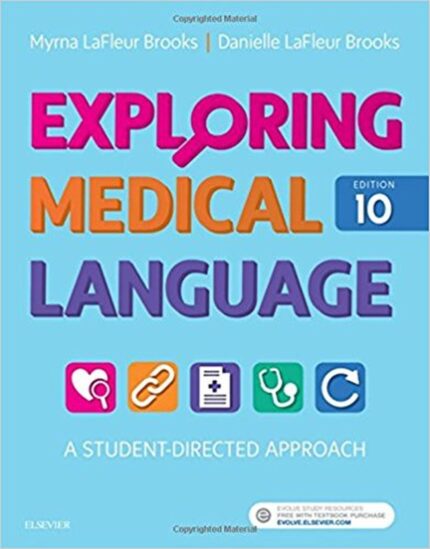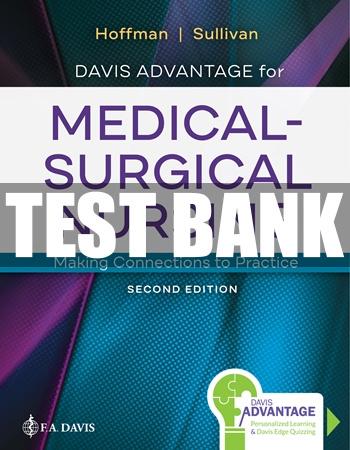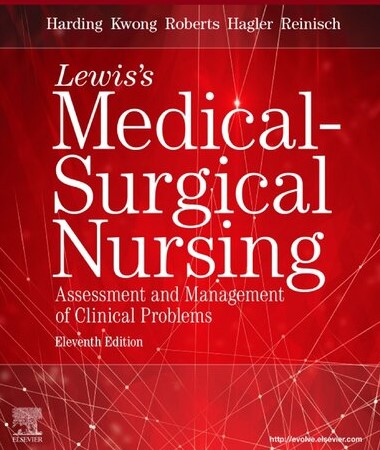Test Bank for Medical-Surgical Nursing Concepts and Practice 3th Edition deWit
Chapter 01: Caring for Medical-Surgical Patients
MULTIPLE CHOICE
1. Which statement accurately describes the primary purpose of the state nurse practice act (NPA)?
a. To test and license LPN/LVNs.
b. To define the scope of LPN/LVN practice.
c. To improve the quality of care provided by the LPN/LVN.
d. To limit the LPN/LVN employment placement.
ANS: B
While improving quality of care provided by the LPN/LVN may be a result of the NPA, the primary purpose of the NPA of each
the state defines the scope of nursing practice in that state.
PTS: 1 DIF: Cognitive Level: Comprehension REF: 2
OBJ: 3 TOP: NPA KEY: Nursing Process Step: Implementation
MSC: NCLEX: Safe, Effective Care Environment: Coordinated Care
2. The charge nurse asks the new vocational nurse to start an intravenous infusion, a skill that the vocational nurse has not
been taught during her educational program. How should the vocational nurse respond?
a. Ask a more experienced nurse to demonstrate the procedure.
b. Look up the procedure in the procedure manual.
c. Attempt to perform the procedure with supervision.
d. Inform the charge nurse of her lack of training in this procedure.
ANS: D
The charge nurse should be informed of the lack of training to perform the procedure, and the vocational nurse should seek
further training to gain proficiency. Although the other options might be helpful, they are not safe.
PTS: 1 DIF: Cognitive Level: Application REF: 3
OBJ: 1 TOP: Providing Safe Care KEY: Nursing Process Step: N/A
MSC: NCLEX: Safe, Effective Care Environment: Coordinated Care
3. Which patient statement indicates a need for further discharge teaching that the vocational nurse should address?
a. “I have no idea of how this drug will affect me.”
b. “Do you know if my physician is coming back today?”
c. “Will my insurance pay for my stay?”
d. “Am I going to have to go to a nursing home?”
ANS: A
Lack of knowledge at discharge about medication effects and side effects is a concern that should be addressed by the vocational
nurse. The other concerns in the options are the responsibility of other departments to which the nurse might refer the patient.
PTS: 1 DIF: Cognitive Level: Application REF: 2
OBJ: 1 TOP: Teaching KEY: Nursing Process Step: Implementation
MSC: NCLEX: Safe, Effective Care Environment: Coordinated Care
4. According to most state NPAs, the vocational nurse acting as a charge nurse in a long-term care facility acts in which
capacity?
a. Working under the direct supervision of an RN on the unit
b. Working with the RN in the building
c. Working under general supervision by the RN available on-site or by phone
d. Working as an independent vocational nurse
ANS: C
The vocational nurse in the capacity of the charge nurse in a long-term care facility acts with the general supervision of an RN
available on-site or by phone.
PTS: 1 DIF: Cognitive Level: Comprehension REF: 2
OBJ: 1 TOP: Charge Nurse/Manager KEY: Nursing Process Step: N/A
MSC: NCLEX: Safe, Effective Care Environment: Coordinated Care
5. The nurse is educating a patient that is a member of a health maintenance organization (HMO). Which information
should the nurse include?
a. Seek the opinion of an alternate health care provider.
b. Obtain insurance approval for medical services prior to treatment.
c. Provide detailed documentation of all care received for his condition.
d. Wait at least 6 months to see a specialist.
ANS: B
Most HMOs require pre-procedure authorization for treatment. Patients are not required to seek a second opinion, provide
documentation of care, or wait a specific time period before visiting a specialist.
PTS: 1 DIF: Cognitive Level: Application REF: 9
OBJ: 9 TOP: Charge Nurse/Manager
KEY: Nursing Process Step: Implementation
MSC: NCLEX: Safe, Effective Care Environment: Coordinated Care
6. The patient complains to the nurse that he is confused about his “deductible” that he owes the hospital. Which
statement accurately explains a deductible?
a. An amount of money put aside for the payment of future medical bills
b. A one-time fee for service
c. An amount of money deducted from the bill by the insurance company
d. An annual amount of money the patient must pay out-of-pocket for medical care
ANS: D
The deductible is the annual amount the insured must pay out-of-pocket prior to the insurance company assuming the cost. This
practice improves the profit of the insurance company.
PTS: 1 DIF: Cognitive Level: Comprehension REF: 7
OBJ: 9 TOP: Health Care Financing
KEY: Nursing Process Step: Implementation
MSC: NCLEX: Safe, Effective Care Environment: Coordinated Care
7. The nurse compares the characteristics of a health maintenance organization (HMO) and a preferred provider
organization (PPO). Which information should the nurse include about HMOs?
a. HMOs require a set fee of each member monthly.
b. HMOs allow the member to select his health care provider.
c. HMOs permit admission to any facility the member prefers.
d. HMOs offer unlimited diagnostic tests and treatments.
ANS: A
HMOs require a set fee from each member monthly (capitation). The patient will be treated by the HMO staff in HMO-approved
facilities. Excessive use of diagnostic tests and treatments is discouraged by the HMO.
PTS: 1 DIF: Cognitive Level: Application REF: 9
OBJ: 9 TOP: Managed Care
KEY: Nursing Process Step: Implementation
MSC: NCLEX: Safe, Effective Care Environment: Coordinated Care
8. A patient asks the nurse what Medicare Part A covers. Which response is correct?
a. Medicare Part A covers inpatient hospital costs.
b. Medicare Part A covers reimbursement to the physician.
c. Medicare Part A covers outpatient hospital services.
d. Medicare Part A covers ambulance transportation.
ANS: A
Medicare Part A covers inpatient hospital expenses, drugs, x-rays, laboratory work, and intensive care. Medicare Part B pays the
physician, ambulance transport, and outpatient services.
PTS: 1 DIF: Cognitive Level: Comprehension REF: 7, Box 1-4
OBJ: 9 TOP: Government-Sponsored Health Insurance
KEY: Nursing Process Step: Implementation
MSC: NCLEX: Safe, Effective Care Environment: Coordinated Care
9. Which is the main cost-containment component of diagnosis-related groups (DRGs)?
a. Hospitals focus only on the specific diagnosis.
b. Hospitals treat and discharge patients quickly.
c. Reduced cost drugs are ordered for specific diagnoses.
d. Diagnostic group classification streamlines care.
ANS: B
DRGs are a prospective payment plan in which hospitals receive a flat fee for each patient’s diagnostic category regardless of the
length of time in the hospital. If hospitals can treat and discharge patients before the allotted time, hospitals get to keep the excess
payment; cost is contained, and the patient is discharged sooner.
PTS: 1 DIF: Cognitive Level: Comprehension REF: 8
OBJ: 9 TOP: Government-Sponsored Health Insurance
KEY: Nursing Process Step: Implementation
MSC: NCLEX: Safe, Effective Care Environment: Coordinated Care

